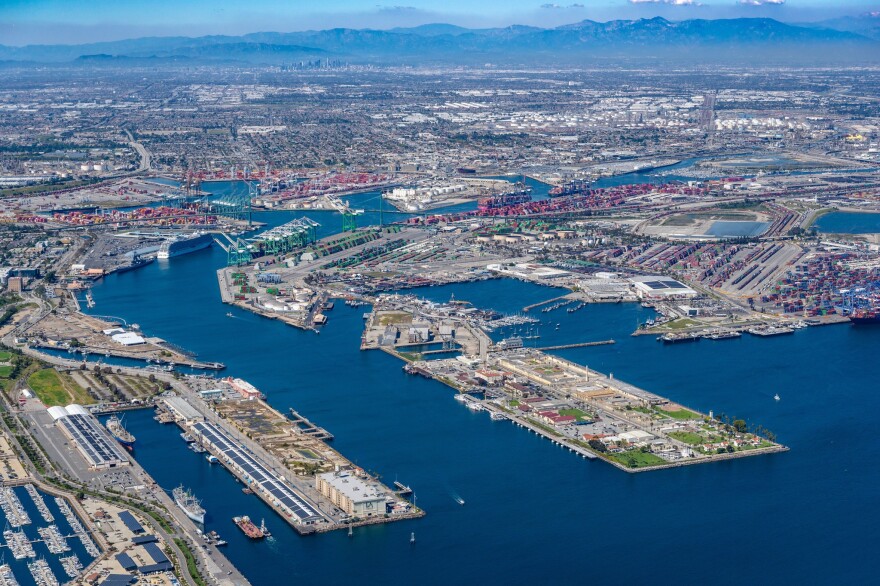Truth matters. Community matters. Your support makes both possible. LAist is one of the few places where news remains independent and free from political and corporate influence. Stand up for truth and for LAist. Make your tax-deductible donation now.
The air is getting cleaner near the Port of LA. Why pollution is down

Planet-heating and health-harming pollution at the Port of Los Angeles is at its lowest levels since records began in 2005, according to the latest data. The Port of Long Beach also saw similar reductions.
Why it matters
The ports of L.A. and Long Beach are, respectively, the two biggest ports in the nation. They’re also some of the largest sources of Southern California’s carbon pollution and smog.
What the data says
Among other pollutants, the recently released report for 2023 emissions found that cancer-causing diesel particulate matter is down 91%, carbon emissions are down 24% and smog-forming pollutants are down 74% from 2005 levels.
Overall emissions are lower than 2020 when the COVID-19 pandemic was at its height, and despite a return to normal operating levels in recent years.
Why the reduction?
There’s a wide variety of factors, which you can explore in the report, but the bulk of the reductions are due to more efficient diesel trucks (read: newer diesel trucks), plus more electric trucks and other electric cargo-handling equipment.
The report highlights that 2023 was also a big year for switching harbor craft and trains to biodiesel, which is derived from plants and emits less pollution than traditional diesel.
The port has also deployed some of the world’s first electric and hydrogen-powered cargo-handling equipment, which traditionally uses diesel fuel.
How the data is parsed
The data includes all the types of equipment that moves through the port: trucks and other heavy-duty vehicles, harbor craft, ocean-going vessels, and other cargo-handling equipment. Rather than using air quality monitors — which catch pollution levels from sources outside of the port, such as oil refineries — the emissions reductions are calculated by the types of equipment actually recorded as used at the port. So it’s more like a math problem, rather than physical pollution monitoring.
What’s next
Both the ports of L.A. and Long Beach have goals to have all-electric or hydrogen-powered terminal equipment by 2030 and drayage trucks by 2035. The ports' actions have global implications for addressing climate pollution from the shipping and trade sectors.
For people living closest to the ports, cleaning up the ports has direct impacts. Port community members who have suffered from the health impacts of poor air quality from the ports and other nearby industry have long pushed for policies that incentivize cleaner trucks, ships and other port equipment.











